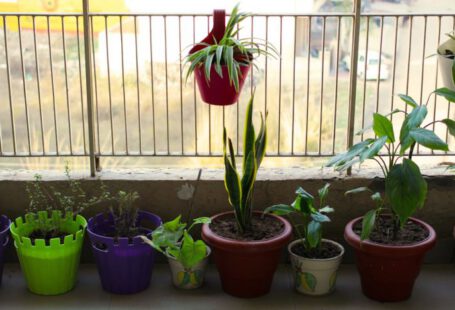Creating a Landscape Plan for Different Seasons
When it comes to designing your outdoor space, considering the changing seasons is essential to maintain a vibrant and harmonious landscape throughout the year. Each season brings its own set of challenges and opportunities for your garden, and by creating a landscape plan that takes into account the characteristics of each season, you can ensure that your outdoor space remains beautiful and functional all year round. In this article, we will explore how to create a landscape plan that caters to the unique needs of each season, allowing you to enjoy a stunning garden no matter the time of year.
Understanding Your Climate
Before diving into the specifics of creating a landscape plan for different seasons, it is crucial to understand the climate of your region. Different plants thrive in different climates, and being aware of the weather patterns in your area will help you select the right plants and design elements for your garden. Consider factors such as temperature fluctuations, rainfall levels, and sunlight exposure throughout the year to inform your landscape plan.
Spring: Embracing Renewal
Spring is a time of renewal and growth in the garden. As temperatures begin to rise and daylight hours increase, plants awaken from their winter dormancy, and new growth emerges. When planning your landscape for spring, focus on incorporating early-blooming flowers, vibrant bulbs, and fresh green foliage. Consider adding flowering trees and shrubs to create a colorful backdrop for your garden.
Additionally, spring is an excellent time to assess your hardscape elements, such as paths, patios, and retaining walls. Repair any damage caused by winter weather and consider adding new features to enhance the functionality and aesthetic appeal of your outdoor space.
Summer: Beating the Heat
Summer brings long days, warm temperatures, and the challenge of maintaining a thriving garden in the heat. When creating a landscape plan for summer, prioritize selecting heat-tolerant plants that can withstand the sun’s intense rays. Incorporate drought-resistant varieties and consider installing irrigation systems to ensure that your garden remains well-hydrated during the hottest months.
To create a welcoming outdoor retreat during summer, focus on incorporating shady spots, such as pergolas, arbors, or shade trees, where you can relax and escape the heat. Add outdoor seating areas and consider outdoor lighting to extend the enjoyment of your garden into the evening hours.
Fall: Embracing Change
As summer transitions into fall, the garden undergoes another transformation, with leaves changing colors and temperatures cooling down. When planning for fall, consider incorporating plants that offer stunning foliage colors, such as maple trees, ornamental grasses, and flowering perennials. Enhance the seasonal beauty of your garden by adding decorative elements like pumpkins, gourds, and seasonal wreaths.
Fall is also an ideal time to prepare your garden for the coming winter months. Clean up fallen leaves, cut back spent foliage, and mulch garden beds to protect plants from frost. Consider planting spring-blooming bulbs in the fall to ensure a colorful display once the weather warms up again.
Winter: Finding Beauty in Simplicity
Winter may seem like a challenging season for gardeners, but with proper planning, you can create a landscape that maintains interest even when covered in snow. Focus on selecting plants with interesting bark, such as birch trees and dogwoods, to add texture and visual appeal to your winter garden. Incorporate evergreen plants like hollies, conifers, and boxwoods to provide structure and color during the colder months.
Winter is also a great time to assess your garden’s layout and consider any changes you may want to make for the upcoming spring. Use this time to sketch out new design ideas, research plant varieties, and plan for future projects that will enhance your outdoor space.
In Summary
Creating a landscape plan that caters to the different seasons is key to maintaining a beautiful and functional garden year-round. By understanding your climate, selecting appropriate plants, and incorporating seasonal design elements, you can enjoy a vibrant outdoor space that evolves with the changing seasons. Whether you’re planting spring bulbs, adding shade for summer, embracing fall colors, or finding beauty in winter simplicity, a well-thought-out landscape plan will ensure that your garden remains a stunning sanctuary throughout the year.





